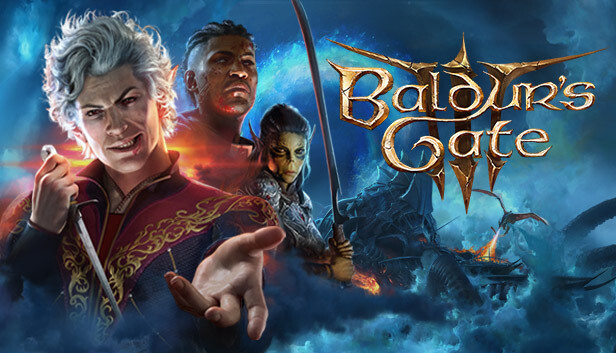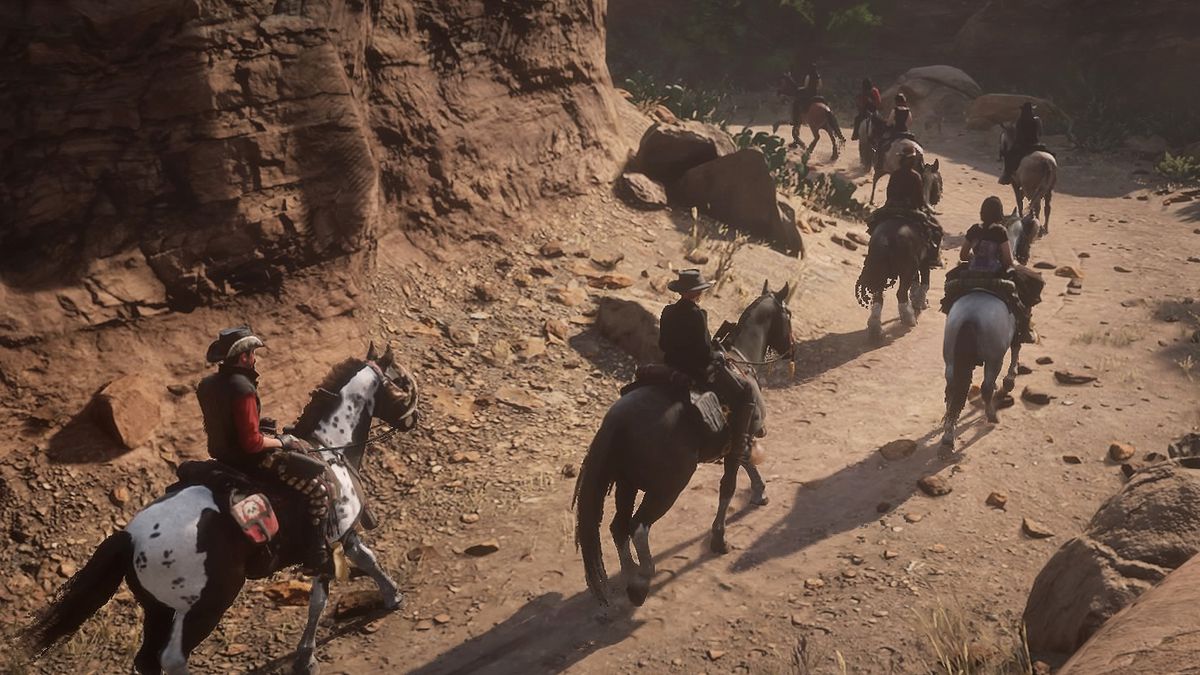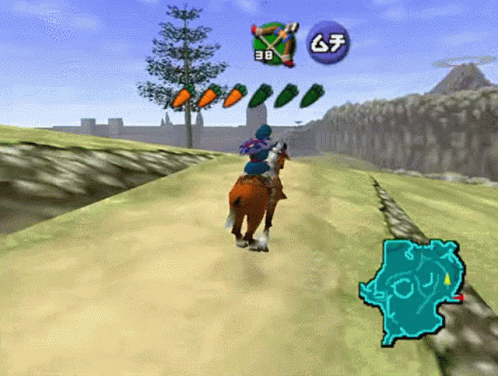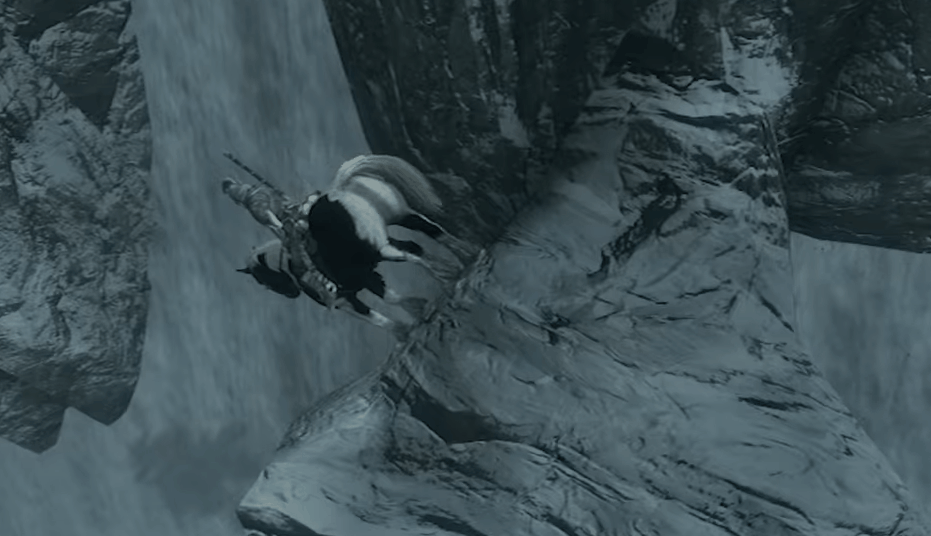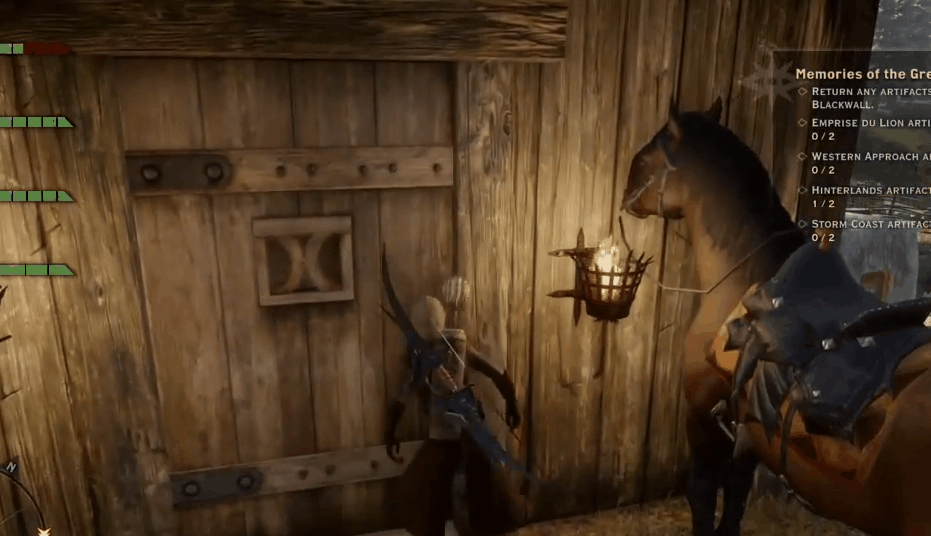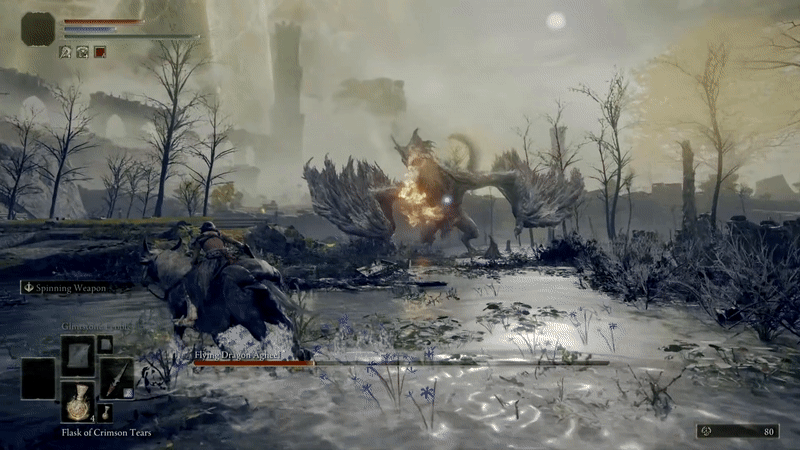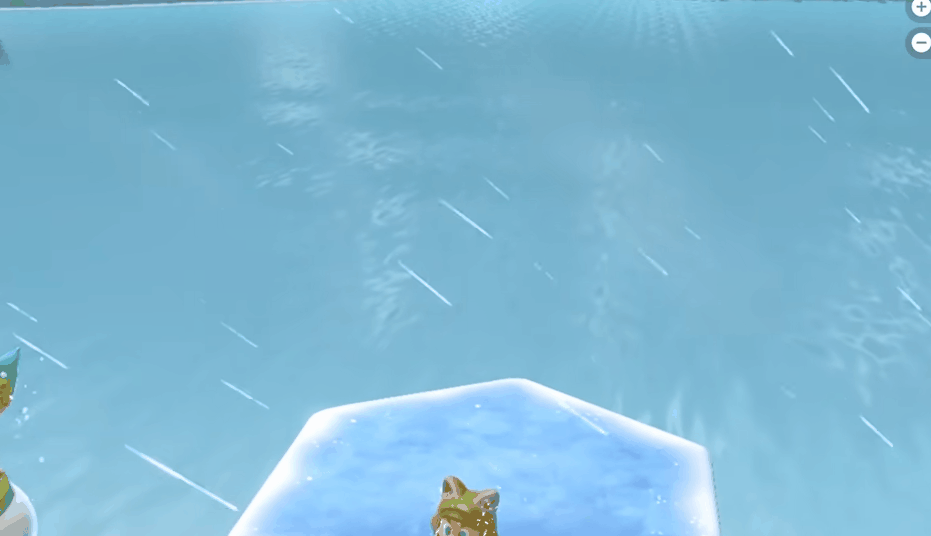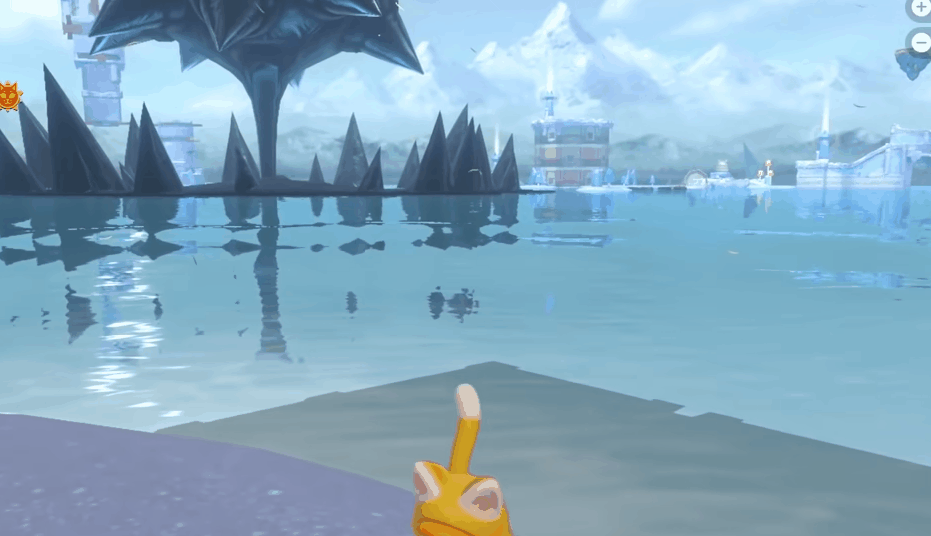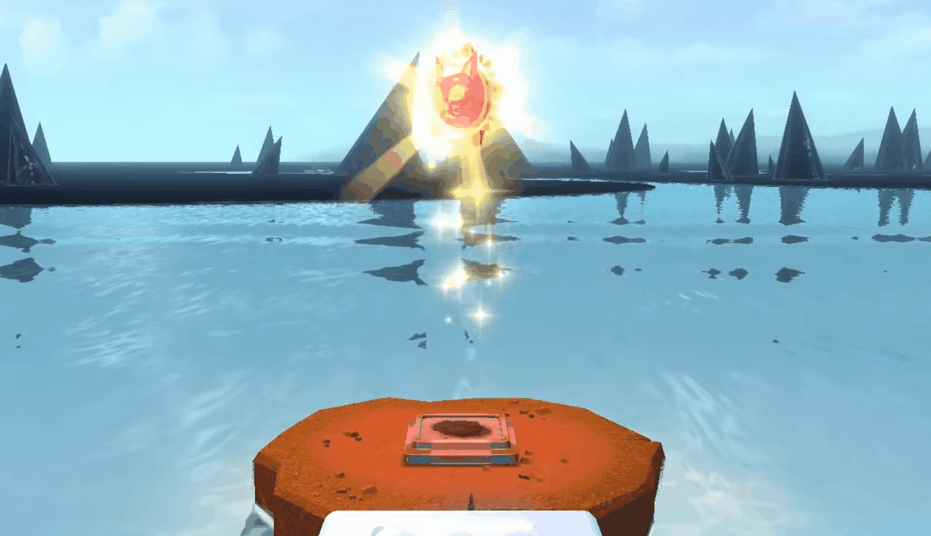You know it, I know it. I’ve spoken to strangers on the street in the past few weeks who know it. Baldur’s Gate 3 is on fire in the twilight of summer of 2023. The game has been extensively praised for its AAA quality that does not include any (as of this writing) in-game purchases or microtransactions, things which in their respective games, tend to replace motivating factors or worse, leverage motivating factors away from player enjoyment to encourage spending. I find it the height of irony, and extremely hilarious, that even given all of the breath, incalculable dollars’ worth of research, and man hours devoted to trying to make the perpetually playable game, to become the perpetually profitable game vis a vis microtransactions, Baldur’s Gate 3 has manage to break records of concurrent players and shatter sales expectations simply by being competently designed, with a respect for the established fundamentals of how game design manages player motivation. How about that.
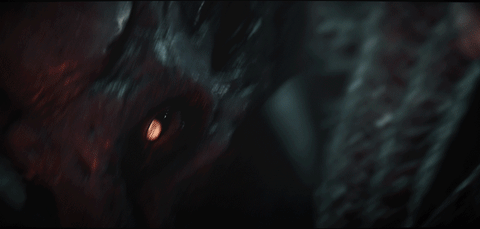
Footage of me about to crash into yet another hundred-hour long RPG I don’t have time to play.
And speaking of motivation, it got me thinking about the game’s balance of intrinsic and extrinsic motivators. If you’ve studied game design for any amount of time, you may have run into these terms ‘intrinsic and extrinsic motivation’. I was particularly interested in how Baldur’s Gate 3 leveraged the concepts in concert with one another, and what specific gameplay aspects map to which form of motivation. The game has made some headlines for its huge numbers of concurrent players on PC – breaking the all time top charts. Clearly something is motivating players to keep coming back, and often, to the point of being notable even in comparison to other games.
Intrinsic and Extrinsic Motivation
So what are our vocab words for the day? Each are a form of motivations that encourages people to do stuff. Extrinsic means motivated by a consequence that exists outside of the action you are being motivated to do. In game design terms, this usually means rewards. Points, gold, gear, are all extrinsic motivators. They give a reason to adventure into the frontier and fight monsters, as opposed to intrinsic motivations – in which the promise of adventuring and fighting monsters is the only motivation you need. An intrinsic motivator is an action which is itself compelling. You might run on a treadmill just to work up a sweat, but you might play a sport just because you enjoy the sport. Both actions lead to a similar result, but in the former case you’re motivated by the result – the reward of the health benefits -, and in the latter case you’re motivated by the act itself.
This applied to Baldur’s Gate in a lot of pretty obvious ways. The game dolls out fairly regular rewards for exploration, dialogue choices, monster fighting, and general adventuring. You clear out a cave of gnolls, you get a cool magic pendant. This makes you stronger, which makes you better at fighting monsters, which you are now more motivated to fight because you can find more magic treasure. Do this enough, and you level up, earning more tools to play with, yet another reward. And so on, forming a feedback loop. But then, why is it that you consider those new tools a reward? The promise of enhanced power could mean faster extrinsic rewards, but it’s also likely you simply relish the idea of getting to use new spells are abilities. That’s intrinsic motivation at work. If you enjoy the strategy and planning involved in a combat encounter, you’re intrinsically motivated.
The Reward In The Labyrinth
A quintessential example of extrinsic motivation is the rat in a maze. If you put a rat in a maze where it can smell cheese hidden in the center, it will follow the scent to the treat, solving the maze. Why does it do this? What’s motivating it? Obviously, it is the promise of reward. It thinks of nothing but that reward in the labyrinth at the center. A game, especially a linear narratively driven one like Baldur’s Gate can be thought of as a labyrinth. It’s a designer’s job to lead player’s willingly through the labyrinth, and so extrinsic rewards are some of the most powerful tools in accomplishing this. What Baldur’s Gate 3 uses as its rewards system is not unique to it, but the results are leading to praise and critical reception the likes of which a western AAA RPG of this type hasn’t seen in a long time, so it’s worth examining. The player is given two major things regularly over the course of regular gameplay, which I would consider rewards – player power, in the form of gold, magic items, and experience points… as well as interactions with, and revelations about the player-controlled characters which make up their party of adventurers.

I am not ready for anything.
In other words, Baldur’s Gate uses its characters as a primary source of extrinsic motivation. You improve their attitude toward you enough, you find interesting encounters out in the world that the characters have things to say about, you progress the main narrative along its course, you are rewarded with more interactions with your party. This only works, of course, because the characters in Baldur’s Gate 3 are written so damn well, and are so compelling. A fair number of games have boring characters, to be frank. A fair number of games have boring characters that talk, a lot. Unless your player wants to get to know your characters, and hang out with them, the threat of more content involving interactions with them will not be very enticing.
Now, I’ve got a lot of opinions on the subject, but this isn’t a writing tips blog, so I’ll try to be pretty succinct, broad, and clinical about this. What makes the characters in Baldur’s Gate 3 work so well for people? Or at least, what do they have in common that’s making everyone want to smooch them, making fan art of them, and play hundreds of hours of a deeply involved role playing game to get to know them better. One obvious key, they all share, is an interesting hook. There’s a weird little fact about each of them that instantly draws you in. The hook is the promise of something interesting that could happen – the seeds of intrigue being planted in your audience’s head. It’s something that raises questions and teases answers. Literally every party member, and many NPCs, in Baldur’s Gate 3 share this quality.
Shadowheart’s hook is – well, it’s already there, isn’t it? Why is this young woman named Shadowheart. That’s a little strange, isn’t it? Does she come from some obscure culture that names people as such? Is it a religious thing? She is a cleric, after all. Maybe it’s just a title. These kinds of questions keep your player guessing, and motivate them extrinsically to want to progress their relationship with these characters until the interactions themselves become enjoyable, and the practice becomes intrinsically motivating. Then you’ve got them. We got all that from dear Shadowheart, and she hasn’t said a word of dialogue. All that before we even discover she worships a dark goddess of pain, in contrast to her very amicable and friendly demeanor. More questions. Another hook. Then we learn she had her memories willingly wiped. Then we discover she is afraid of wolves. Etc. All the Baldur’s Gate characters have a lot of these little secrets about them that get hinted at gradually as the game progresses, and many of which are inter-related. Before you learn about Astarion’s personal problems, he tries to make nice after holding you at knifepoint. Before you learn about Karlach’s heart condition, you learn she fought against her will in a blood war in hell.
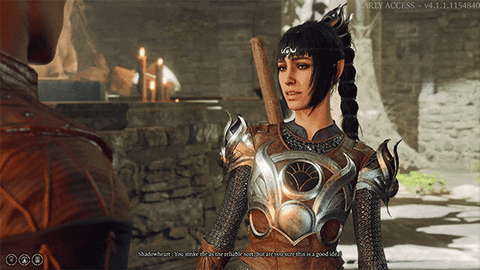
I would die for you.
Again, without going too much into the nuances of to write compelling characters, a topic way beyond the scope of this blog post, I will say that this cast all have consistently engaging presence. This is something I notice in a lot of media that loses my interest. You can have the ‘deepest’ most ‘complex’ characters in the history of literature, but if A: Their depth is not conveyed (with those hooks, and subsequent payoffs) or if, more importantly in my opinion, B: They are not compelling to spend time with, your characters are not going to move people. Characters are more than just the hooks and the big reveals and the huge dramatic shifts and the larger-than-life inner turmoils. Think about your friends, your family. The people you love. Most of the time, assuming a healthy relationship, you’re not spending most of your time with people in high-intensity emotionally fraught confrontations. Most human interaction is just… shitting around.
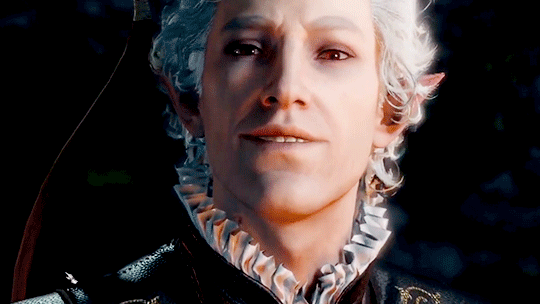
You are a consummate loser, but you’re my consummate loser.
Baldur’s Gate 3 characters are excellent at shitting around. Astarion’s over-the-top, campy, cynical melodrama is fun, and funny. Shadowheart’s deadpan earnestness is charming and sweet. Karlach’s puppy-like sense of wonder with the world around her and irrepressible optimism is a delightful contrast to her menacing appearance and horrifyingly tragic backstory. Gale’s flighty, overly poetic, and know-it-all manner of speech makes him dorky and affable. All this, of course, bolstered by stellar acting performances. These people are just a good time to be around. It doesn’t feel like wasted time listening to them talk. This is all compelling, entirely aside from any deeper emotional complexity. Mere exposure to them is compelling. The fact that you might like these people, is what makes emotional complexity and the answers to those hooks from earlier mean something. It’s what makes them captivating and moving and effecting. People carry on through massive, hundred-hour-long RPG experiences like Persona or Dragon Age or Final Fantasy or Xenoblade or Baldur’s Gate not just for the carrot on the end of a stick. The interactions with the characters must themselves become an end, not just a means.
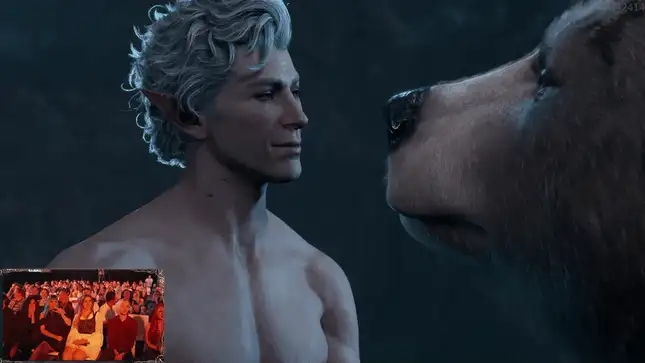
Although it’s not a bad idea to keep ample rewards mixed in…
Learning more about these characters is the reward at the center of the labyrinth, but in the process, your player learns to love the process. Players no longer will play the game just to discover their party’s dark secrets, but to hang out with the party. That will keep a player moving through however much content you have to offer them – as the content itself becomes the goal, not just the rewards it can unlock. This, I think, is the secret spice to Baldur’s Gate 3‘s success. How this applies to its characters is a foundational pillar to its game’s design, but this philosophy also finds its way into all aspects of the design.
Combat As Player Expression
On another note about combat being intrinsically motivating. A major part of this Role Playing Game, based on a popular tabletop Role Playing Game, is the role playing. Now, not everyone engages with these systems, but I find it very clever how Larian utilized roleplay as a form of gameplay through its mechanics. If you have bought in to the world of Baldur’s Gate, then you may see the fun in entirely embodying your player character through their actions, dialogue responses, and fighting style. Maybe your character doesn’t kill. Maybe they kill everyone and push people off of cliffs at any given opportunity.
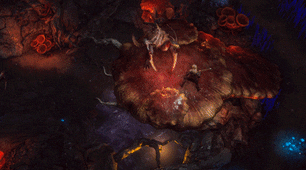
More designers would do well not to underestimate the unfiltered joy of pushing things off of cliffs.
Combat and dialogue in this game is full of intentionally placed opportunities for various decisions with various results. Some players may encounter very clever strategies for defeating tough enemies, where as other players may not fight those enemies at all. Through this clever planning, Larian has made way for roleplaying to be an intrinsic motivator. If you are bought in to roleplay, then when combat and dialogue presents ample opportunities to engage in it, combat and dialogue becomes a lot more engaging.
Bringing it back, this highlights an important aspect of combat in games I feel is often overlooked. High-intensity gameplay like combat can be a source of player expression, as much as it is a challenge of skill. When a player chooses to be a mage instead of a warrior, or on a more micro level, when a player chooses to throw a punch instead of a kick, they are putting a bit of themself into the game. Any veteran player in competitive games will tell you that people develop playstyles – comfortable patterns reflective of their personality. This is true of single player games too. It’s satisfying to see a bit of your creativity pay off in a functional system! So even where roleplay is not directly involved, it’s important to consider a wide variety of viable player choices for solving gameplay challenges, as the creativity and personal expression that affords is also intrinsically motivating.
Player Expression As Player Expression
But combat is not the only way to encourage this behavior! Players are known for doing things ‘just to see what happens’. Getting to see what happens is the extrinsic motivator. Embodying the role of the character as the player conceives and perceives them, is intrinsically motivating – roleplay is a method of play that is done entirely for its own sake, for the joy of embodying a fantasy role. So to Baldur’s Gate 3‘s credit, it opens a lot of avenues to a lot of potential character archetypes. Unique dialogues related to what class, race, and background the player’s character is, kindly or cruel dialogue responses, branching story decisions. That’s all great for this, but it’s also all set dressing. What really impresses me is the avenues available for navigating the world that reflect back on the player character. In the early game even.
For example, there’s a goblin camp. You can run in swords and spells blazing, and fight them all. It’s tough, but doable. OR, if you’re a druid or otherwise have access to the talk to animals spell, you can sneak into their camp and convince their domestic spiders that their goblin masters are good eating, and get some help in the fight. OR, if you talked to some mercenary ogres the goblin leaders hired, you can give them a better offer, and get their help in the fight. OR, you can bypass fighting entirely – team up with the goblin leader and earn her trust. OR, ingratiate yourself with the goblins just long enough to find a storehouse full of explosives, and raze the place to the ground. And that’s just a handful of all the options available. That’s not even to get into all the little micro-decisions baked throughout the goblin camp which greatly vary the experience, and constantly get the player asking what sort of character they are playing. It’s quite impressive, I’ve seen the game turn people who are not super seriously into tabletop-type games, into out-and-out roleplayers.
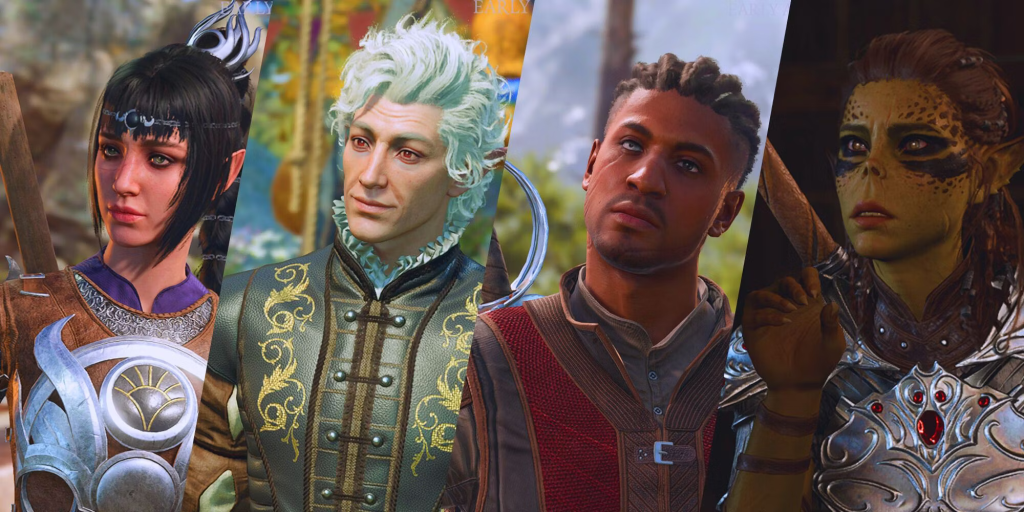
The Squad live reaction when you suggest murdering that old lady for her stuff.
I’d Write a Conclusion Here, But I’ve Got To Go Play More Baldur’s Gate 3 ©
So, uh, yeah. I just thought it was really neat how the narrative elements of Baldur’s Gate 3 like the characters are not treated as simple icing on the cake, but rather a material and core aspect of gameplay itself. It’s not the type of game which segregates story and gameplay. I think this is how they keep rocking such huge quantities of concurrent players. The next time you play, which for me will be right after I finish writing this, try and see how the character interactions are influencing your decision-making and how you engage with the game.
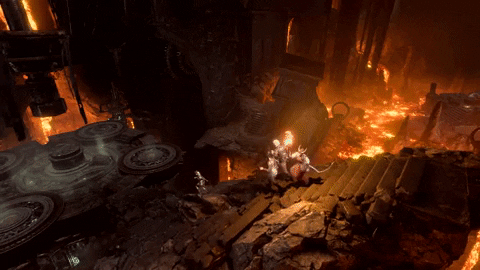
Gather Your Party And Venture Forth…
